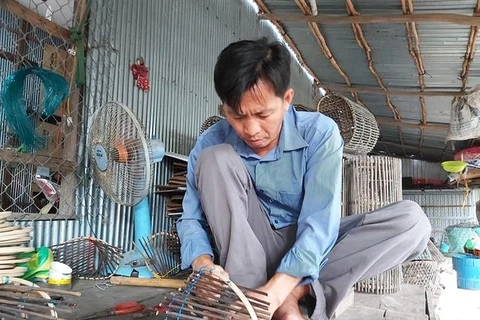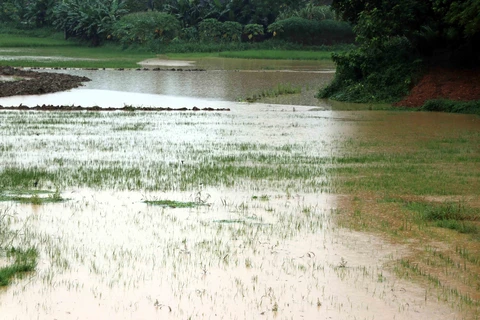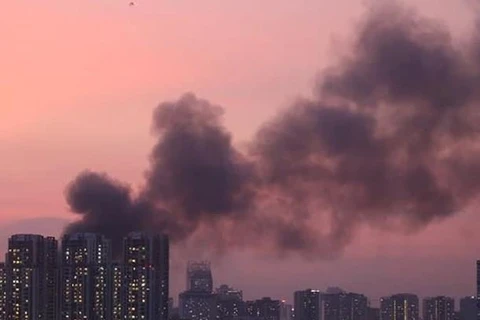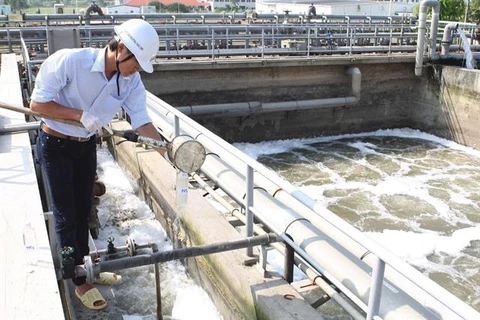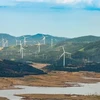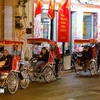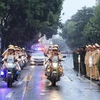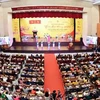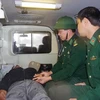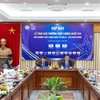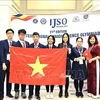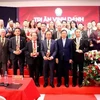HCM City (VNS/VNA) - The Mekong Delta has restructured agriculture towards climate-change adaptation and market demand by establishing specialised farming areas for its key agricultural products, and by growing other crops on ineffective rice fields or rotating rice with other crops on the same field.
The delta, the country’s largest rice, seafood and fruit producer, achieved a growth rate of 3 percent a year between 2016 and 2018, higher than the country’s average growth rate of 2.67 percent, according to the Ministry of Agriculture and Rural Development.
In An Giang province, local authorities and farmers have set up specialised farming areas and used advanced farming techniques in recent years.
The province has established a 25,000ha specialised glutinous-rice area in Phu Tan district, becoming the country’s first province to have such an area.
It has also set up specialised farming areas for cultivating three-colour mangoes grown according to Vietnamese good agricultural practices (VietGAP) standards in Cho Moi district.
Another specialised area cultivates banana from tissue culture and breeds pig with high technology in Tri Ton district. In addition, farmers breed giant river prawns in Thoai Son district.
Last year, large-scale rice fields on a total area of 33,531ha were active in the province.
Nguyen Si Lam, director of the An Giang Department of Agriculture and Rural Development, said to develop the specialised farming areas sustainably, the province had set up zones and applied advanced farming techniques.
The province had improved the operation of cooperatives who work in these specialised farming areas, he said.
In Soc Trang province, local authorities have instructed and given financial support to farmers to rotate rice and other crops on the same rice fields so they can improve profits and stop the spread of rice disease when rice crops are planted without interruptions.
Tran Xeu Hot, who takes part in the Vietnam Sustainable Agriculture Transformation Project in Soc Trang (VnSAT-ST), has rotated growing rice and watermelon on his rice field in My Tu district’s Phu My commune.
Hot uses organic fertiliser to grow watermelon, which has reduced the use of urea fertiliser by 30 percent and improved yield by 20-30 percent compared to other watermelon fields that do not participate in the VnSAT-ST.
He earned a profit of 14 million VND (600 USD) per 1,000 sq.m of water melon a crop, he said.
“The rotation has helped reduce rice pests and diseases significantly,” he said.
The delta has reduced rice farming areas and increased the cultivation of fruit, aquaculture and animals in agriculture restructuring in recent years.
The delta’s 12 provinces and Can Tho city have developed farming models that adapt to climate change such as a shrimp-rice farming model and a model to breed aquatic species in mangrove forests.
In Ben Tre province, farmers have turned more than 10,000ha of ineffective rice fields to breed aquatic species and other high value crops, according to the province’s Department of Agriculture and Rural Development.
Ben Tre, the country’s largest coconut producer, has also increased its coconut growing area from 68,200ha in 2015 to nearly 71,000ha last year.
Nguyen Van Buoi, deputy director of the Ben Tre Department of Agriculture and Rural Development, said the province’s agricultural restructuring had been done properly and is suited its ecological and irrigation conditions.
In Kien Giang, one of the delta’s coastal provinces affected by rising sea levels and saltwater intrusion, the area of shrimp-rice farming model increased from 71,500ha in 2014 to 89,000ha last year.
Under the shrimp-rice farming model, farmers breed shrimp in the dry season and grow rice in the rainy season on the same rice field.
The model produces a rice yield of 4-5 tonnes per hectare a crop and 300-370kg of shrimp per hectare a crop, offering farmers a profit of 2-4 times higher than monoculture of rice, according to the Kien Giang Department of Agriculture and Rural Development.
The model also helps protect the environment as farmers use few chemicals to cultivate rice and shrimp. Rice and shrimp produced under the model are clean products.
However, the delta’s sustainable farming models are mostly implemented on a small scale and in a scattered fashion, according to local authorities.
In addition, erosion, subsidence, flooding and saltwater intrusion caused by climate change have affected the delta’s agricultural production.
To develop the delta’s sustainable agriculture, the Ministry of Agriculture and Rural Development has planned agriculture orientation for its upper, middle and coastal sub-regions to 2030.
The upper sub-region will develop diversified agriculture, focusing on rice and tra fish, on a sustainable basis.
The upper sub-region holds an important role in regulating and draining the delta’s floods caused by the rising level of the Mekong River in the rainy season.
In the middle sub-region, horticulture will be the focus in an aim to develop the country’s largest fruit growing area.
In addition, the middle sub-region will develop concentrated rice growing areas, vegetables, industrial trees and freshwater aquaculture and brackish water aquaculture with moderate brackish level.
This sub-region plays a role in regulating freshwater for the coastal sub-region.
The coastal sub-region will develop agriculture based mainly on saline and brackish water and promote its advantage for aquaculture.
It will also develop areas for specialty rice and plants that need less freshwater and are resistant to saline water.
The coastal sub-region, which has the largest forest area in the delta, will develop an agro-forestry system towards ecology, organic agriculture and ecotourism, according to the ministry.
The delta will continue to reduce its rice growing area, increase areas of fruit and aquaculture, and develop breeding animals with advanced techniques and on a large-scale.
It will also develop mangrove forests and forest-based livelihood models, as well as ecotourism./.
VNA

